Club de Campo Villa de Madrid officially opened in 1931 and 12 months later its golfing adventure began with the opening of a nine-hole course.
In 1990 it hosted its first DP World Tour event and since then has hosted 11 more across the Open de España, Open de Madrid and Madrid Masters.
Seve Ballesteros' victory here in 1995 was his 50th and last on Tour and he is joined on the roll of honour by fellow Ryder Cup Captains Colin Montgomerie and Pádraig Harrington.
The Black Course which the players will take on this week was designed by renowned Spanish course architect Javier de Arana and here, the host venue's maintenance and management team adviser Alfonso Piñero takes us through the test facing the field this week.
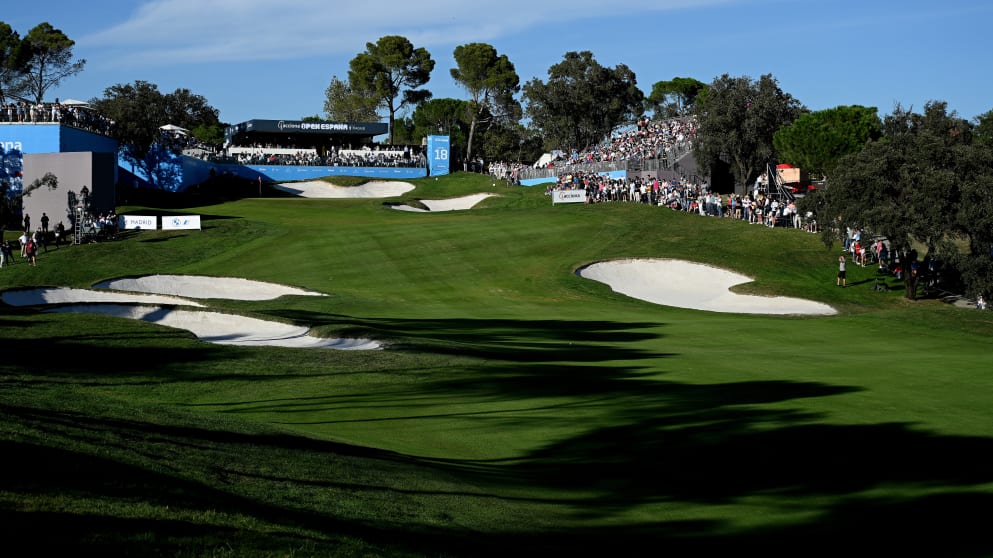
Hole 1 (par 4)
The tee is 20 yards further back, increasing the difficulty of the drive and the bunker on the left-hand side is now the reference point. A fade is required with a driver or three-wood, leaving a second shot with anything from a six-iron to a wedge. The most difficult pin position on this small narrow green is back right.
Hole 2 (par 4)
This tee has also been moved back 25 yards, so the bunkers on the left (300 yards) now come into play. The second shot is a similar length to the approach on the first hole - from a wedge to a seven-iron – into a more level green where the easy pin is at the front and the most challenging is middle-right.
Hole 3 (par 3)
The front flag is the most difficult here because of how narrow it is and if you miss on either side, a bogey or double is likely. The back pin is more accessible since if you miss there is more space to recover.
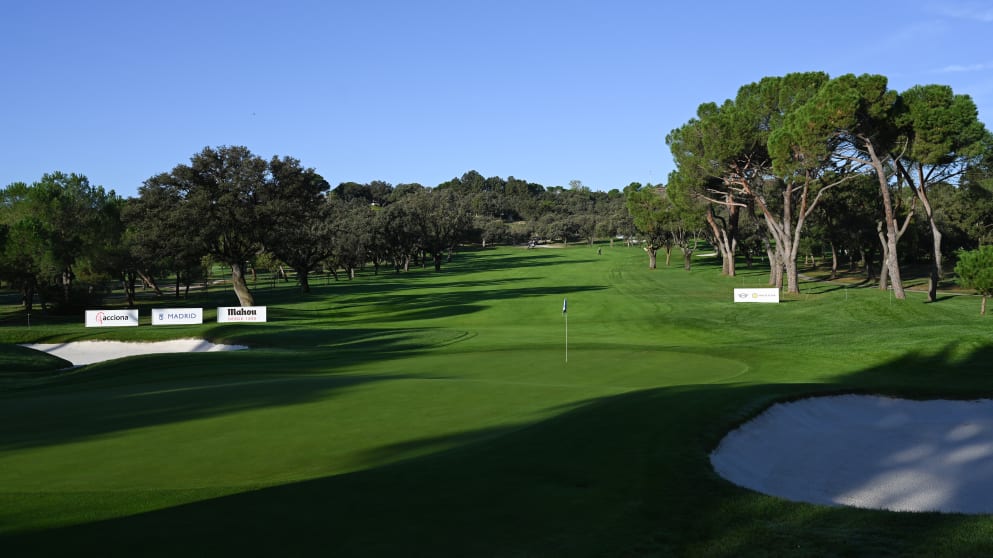
Hole 4 (par 5)
The tee has moved back 10 yards, meaning that the landing area in the fairway is now at 285 yards. Into the wind it becomes very challenging but otherwise it is a good birdie chance. The rough on the right will be very thick for the Open de España but if the players are able to steer clear of that they will not have any difficulty. The back-left flag is dangerous, we will see a number of three-putts there.
Hole 5 (par 4)
A strategic hole where players can elect to tee off with either an iron or a driver according to how challenging the rough on the left is. They will have a second shot with anything from a seven-iron to a wedge, depending on their strategy. Not a complex green, but the back-right pin is one to be wary of.
Hole 6 (par 4)
The normal club off the tee here is a two-iron or hybrid to take the ditch out of play. Some players might decide to carry it but there is little reward for this. As with most greens, a flag short of the tier is the simplest but the top is very tough.
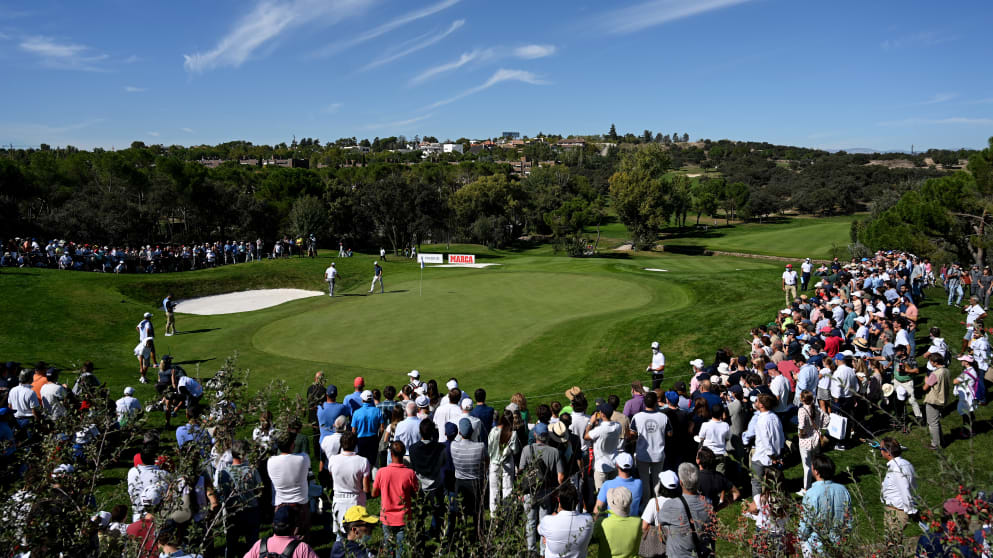
Hole 7 (par 5)
This is a recovery hole where the new tee from three years ago puts the bunker at 300 yards, which the big hitters will be able to carry without difficulty. Care needs to be taken with the thick rough we have let grow up on the left as if the ball bounces on the downslope it may run into trouble. Pins at the back of the green are the tough ones because of all the contours which are, in reality, this hole’s main defence. We will see a lot of birdies and the odd eagle here because the green is within reach with an iron.
Hole 8 (par 4)
This is the simplest hole on the course, although a drive missed to the right will leave players in a tight spot because we have let the rough grow extremely thick here. The back-middle pin position is the most difficult but players should not struggle too much.
Hole 9 (par 3)
The players will not be hitting more than a seven or eight-iron from the tee on this hole. The lateral tier that divides the green makes the short-right flag the tricky one but if they are faced with an easy pin (left-hand side), players that get stuck on the top tier may be staring a three putt in the face.
Hole 10 (par 4)
The bunker at 300 yards is difficult to carry because the rough will be very tricky, therefore it is important to find the fairway. The green is very undulating and the most difficult pin is front-middle, close to the bunker. If you under-club, that bunker will pose a threat on what looks like a simple, short hole.
Hole 11 (par 3)
The easy flag is short left but if players try to get too cute and do not reach the green, the run-off area we have created will feed the ball a long way down. Beware the back-middle flag, where the slopes may cause problems even on the shortest of putts.
Hole 12 (par 4)
The fairway bunker is an easy carry but the holm oak in the fairway might hamper the second shot. If they miss left, they will have to deal with another oak surrounded by deep rough in the landing area. Players will have to make a decision on the tee because strategy and execution are key, since if you nail a drive you are rewarded with a very short approach, otherwise par becomes a difficult result. The toughest flag is in the middle where there is a small plateau.
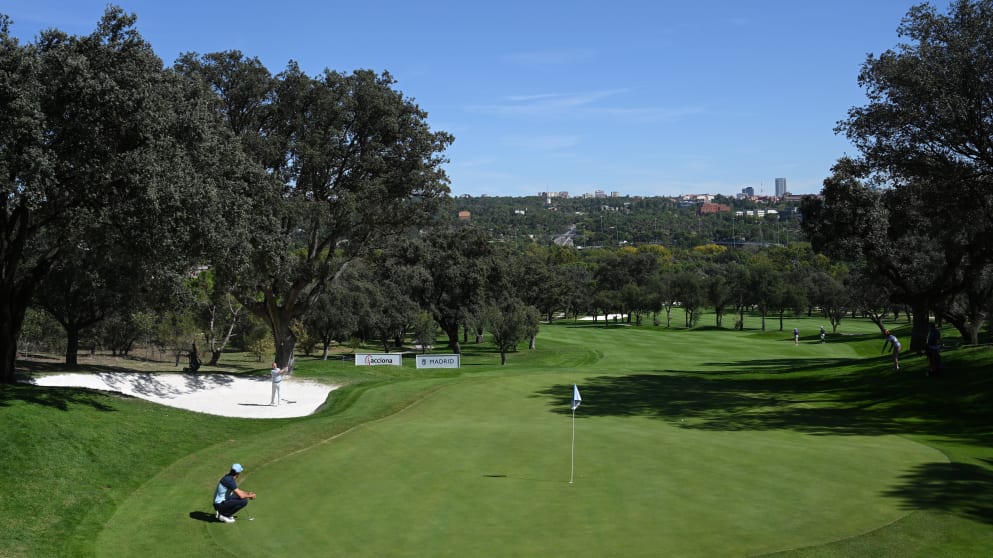
Hole 13 (par 4)
There is a new tee 15 yards back, similar to the one on the first, which invites you to hit a power fade. The second shot will depend on how dry the fairway is but it will be no more than a seven-iron into an undulating green whose toughest flag is at the back and in the middle. Care needs to be taken reading the green because a lot of the contours are easy to miss.
Hole 14 (par 5)
Quite a simple tee shot to a generous fairway, although the left side should be favoured even if they carry the bunker because if they end up in the right-hand rough it will be difficult to reach the green. The green sits diagonally to the fairway meaning that a fade is required for the approach, otherwise they may be paying a visit to one of the bunkers. Not an easy eagle opportunity but it will offer up plenty of birdies. The most hazardous part of the green is the middle-left.
Hole 15 (par 4)
Another short hole like the eighth, where the danger lies in the left rough. If they hit a good drive, the only problem they may face is the centre-right of the green, where there are some significant slopes.
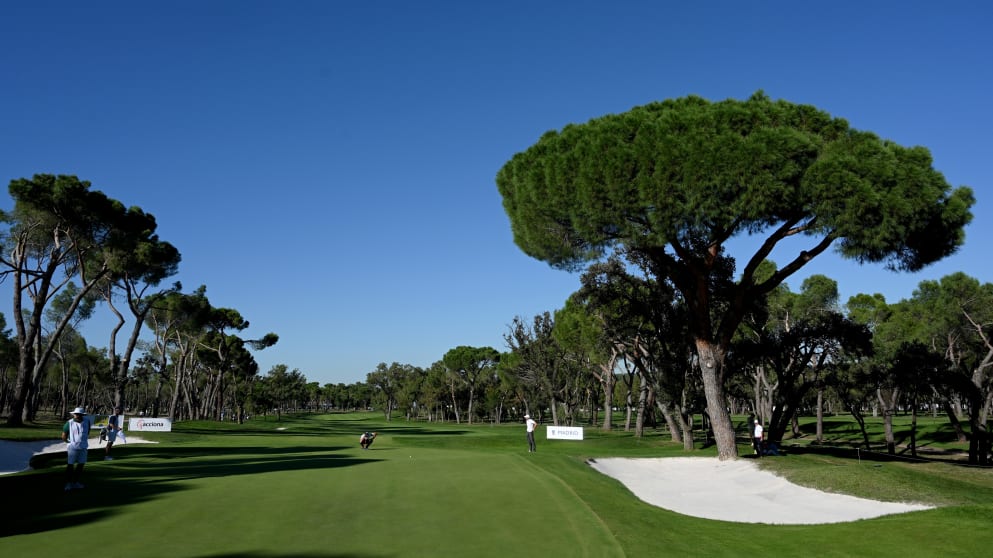
Hole 16 (par 4)
We have recuperated an old tee, 25 yards back, making the bunker a 300 yard carry. By that bunker we have created an area of very aggressive rough so the bail out area will be left even though there is less bounce there. The second shot will be longer, anything from a six-iron to a wedge. The green here is very narrow and the most difficult pin position is back-left.
Hole 17 (par 3)
We have also extended this hole by 20 yards making for an extremely demanding tee shot because this is the smallest green on the course. They will hit between a six and eight-iron. The toughest pin is back-right because the undulations in that area are very difficult to navigate.
Hole 18 (par 4)
This hole poses the biggest conundrum for players because we have let the rough grow up all along the fairway. They will have to decide whether to go for short or medium distance from the tee. The big-hitters might even go for it in one. The problem with front flags on this hole is that if you come up short or the ball has too much spin it may catch the run off and finish 45-55 metres from the green.







